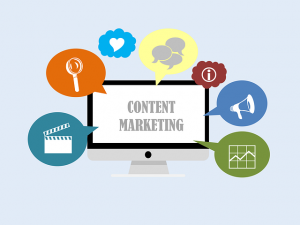 In today’s rapidly evolving business landscape, sustainability has emerged as a defining factor. That means entrepreneurs now have a unique opportunity to craft eco-conscious enterprises that resonate with their values and consumers’ growing environmental awareness. Today, RTJ Online will explore essential strategies for entrepreneurs to develop a sustainable and effective business and marketing plan.
In today’s rapidly evolving business landscape, sustainability has emerged as a defining factor. That means entrepreneurs now have a unique opportunity to craft eco-conscious enterprises that resonate with their values and consumers’ growing environmental awareness. Today, RTJ Online will explore essential strategies for entrepreneurs to develop a sustainable and effective business and marketing plan.
What Is Eco-Friendly
According to the Cambridge Dictionary, eco-friendly means “Eco-friendly products have been designed to do the least possible damage to the environment.”
When it comes to products, everything from production to packaging must be considered safe for the environment. However, the FTC has strict guidelines on eco-friendly claims, and here’s where it gets tricky: The FTC Green Guides say that for a product to be correctly labeled as “eco-friendly,” the packaging must explain why it is environmentally responsible. Otherwise, based on how consumers use the product, it could harm the environment. Plus, the guides outline certifications and seals of approval that products can receive to substantiate their claims.
Being Sustainable
Our environmental experts prefer to use the term “sustainable” rather than “eco-friendly.” Why? Regarding product production, everything negatively impacts the environment (think water usage, energy, product waste, etc.), which means there aren’t any products that fit the dictionary definition of eco-friendly.
On the other hand, when we call something sustainable, it means that a single attribute is good for the environment — not necessarily everything about the product. “Eco-friendly” is also considered a greenwashing term, as it is regularly used in misleading marketing claims.
Fully Embrace Sustainability
Your business’s core principles should be firmly grounded in sustainability. Implement measures to minimize waste, conserve energy, and reduce carbon footprint. By instilling eco-friendly policies, you set an example for your employees and establish trust with environmentally-conscious customers who seek businesses committed to making a positive impact.
Select a Green Location
Selecting an ideal location for your enterprise is crucial, mainly if you aim to promote environmentally friendly practices. Opting for a location in a neighborhood conducive to walking aligns with eco-conscious values and motivates clients and staff to favor walking over driving. It’s beneficial to choose a locale that is recognized for its pedestrian accessibility. This approach supports your green initiatives and enhances community engagement for your customers and employees.
Go Back to School
These days, entrepreneurs need every advantage they can get – and earning a business degree is a great way to give yourself an edge over your competition in the sustainable business world. In addition to gaining inside knowledge about the inner workings of the business community, you’ll benefit from the flexibility of online learning, which allows you to proceed at your own pace from the convenience of home.
Creative Content Marketing
In green business marketing, the key to success is crafting content that resonates with and educates the audience. This method allows companies to build trust and authority, which is crucial in the environmentally-conscious market. Such an approach strengthens the customer bond and sets the stage for increased sales.
Sustainable Supplier Collaborations
Forge strategic partnerships with suppliers who share your commitment to sustainability. Source materials and products from eco-conscious providers who only engage in environmentally-friendly practices, such as sustainable packaging and shipping methods. These collaborations support your green initiatives and foster a network of like-minded businesses.
Promoting Environmentally Sound Offerings
Champion products and services that align with environmental sustainability. Emphasize the eco-friendly  attributes of your offerings and educate consumers about the benefits of choosing green alternatives. You can attract eco-conscious consumers and differentiate your business in a crowded marketplace by showcasing the ecological impact of your products and services.
attributes of your offerings and educate consumers about the benefits of choosing green alternatives. You can attract eco-conscious consumers and differentiate your business in a crowded marketplace by showcasing the ecological impact of your products and services.
Use Social Media to Educate
Leverage the power of social media platforms to inform and engage your audience on environmental issues. Share informative posts, eye-catching infographics, and compelling videos that raise awareness about environmental challenges and provide practical guidance for sustainable living. Encourage your followers to advocate for eco-conscious choices, amplifying your brand’s reach and impact.
Invest in the Future
Allocate a portion of your budget towards eco-friendly investments that will pay dividends in the long run. Explore renewable energy sources, invest in energy-efficient technologies, and consider sustainable infrastructure enhancements. These investments reduce your environmental footprint and can lead to significant cost savings over time, bolstering your bottom line.
Conclusion
Building a sustainable business isn’t just a moral imperative; it’s a savvy business decision in today’s world. You can attract a growing base of environmentally aware consumers by ingraining sustainability into your business’s core, collaborating with eco-conscious suppliers, and creatively communicating your commitment to the environment. Your steadfast dedication to sustainability benefits the planet and enhances your enterprise’s success and reputation. Embrace the green paradigm shift and leave a positive mark on today’s world. Sustainable entrepreneurship is not just a trend; it’s the future of business.
RTJ Online is the social media assistant you’ve been looking for. Reach out today if you have any questions. And unlock your business’s potential with Socialhealthtoday.com. Visit our website to discover top-tier social media marketing services tailored to elevate your brand and drive engagement. Please use our expert insights and strategies to help your business thrive.
By Ed Clarke & R Jackson
 Digital marketing is a term to describe marketing practices that use digital technologies. It is not just about online advertising but also includes online communities,
Digital marketing is a term to describe marketing practices that use digital technologies. It is not just about online advertising but also includes online communities,  5. Social Commerce & Influencer Marketing
5. Social Commerce & Influencer Marketing 8. SEO & Content Marketing
8. SEO & Content Marketing It has been called the future of writing! Artificial Intelligence (AI) has rapidly evolved in recent years, and it is increasingly used to create marketing content. With the growth of digital marketing, Artificial Intelligence (AI) in content marketing transforms how businesses engage with their audience. As AI continues to evolve, it offers immense potential for small business owners, entrepreneurs, social media managers, and individuals seeking to enhance their
It has been called the future of writing! Artificial Intelligence (AI) has rapidly evolved in recent years, and it is increasingly used to create marketing content. With the growth of digital marketing, Artificial Intelligence (AI) in content marketing transforms how businesses engage with their audience. As AI continues to evolve, it offers immense potential for small business owners, entrepreneurs, social media managers, and individuals seeking to enhance their  Here are some tips for using this powerful software effectively:
Here are some tips for using this powerful software effectively: